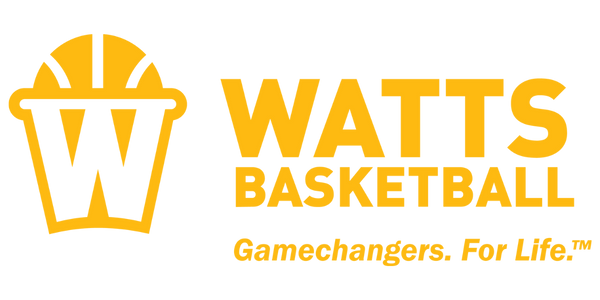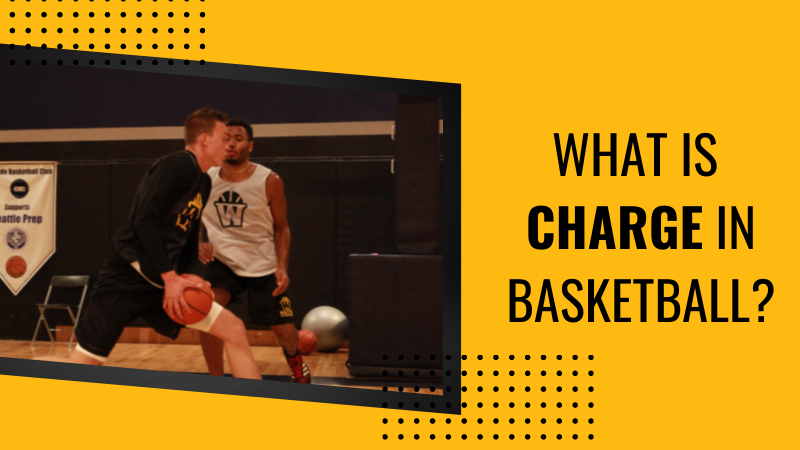A charging foul, or charge, is a common foul in basketball. It happens when an offensive player moves into the defender who is in-bounds, with both feet on the ground and their torso facing the opponent. If you want to learn more about what is charge in basketball, continue reading below!
Hoop Lingo: Learning What is Charge in Basketball
In-game fouls can change the complexion of a basketball match and can even make all the difference between a win and a loss. For this exact reason, it is important to learn the various types of fouls committed on the court. Now one of the most crucial ones is the charge, an offensive foul that occurs when the ball handler crashes into a defender who has established position. To know more about it, here’s what a charge is in basketball.
In-depth definition of a charge
What is charge in basketball? Charging is a type of personal foul that occurs when a player with the ball runs into an opponent while making no attempt to stop and/or change direction. The key factor in judging a charge is whether the defender was stationary or moving (either towards or away from the offensive player). Charging results in personal fouls for both the offensive and defensive players involved and loss of possession if committed by the offense. This illegal play frequently occurs on fast breaks leading to large collisions between offensive and defensive players which often result in injury.
A charge is like a block, in that the offensive player contacts the defensive player and displaces him from his original position. The key difference between a charge and a block is that in order to be called a charge, the offensive player must begin in a place where he has time and room to stop or change direction. Essentially, the dribbler has to be given an opportunity to avoid the defending player before an offensive foul is called.
Be mindful of the different types of foul in the game!
Charge vs Block: The Difference
A charge occurs when an offensive player makes direct contact with a defender who has committed a foul within the rules of the game. Contact which is not initiated by the offensive player can also result in a charge.
Meanwhile, offensive fouls are called for whenever an offensive player makes direct contact with a defensive player who has initiated a foul attempt within the rules of the game. Offensive fouls are also called for when a player’s push or barrage of punches or kicks connects with an opponent either high or low enough to warrant a contact from the officials. As mentioned above, blocks are also part of the game and are called when an offensive player takes violation after violation against a defender.
Importance of learning the charge
Learning what is a basketball charge is something every basketball coach requires their players to know how to do properly. The purpose of learning what is charge in basketball is to eliminate fouls on legitimate blocks or charges from occurring throughout the course of the game. Furthermore, learning how to take a charge in basketball can help you develop an instinct for making good, defensive plays that can get you out of a tight spot in a game. A great charge—when the offensive player doesn’t draw the charge, but still has to change his shot at the last second—can energize your team because it means the other team hasn’t hit their stride yet.
Knowing what is charge in basketball is a very important skill as it will help your team win games without giving away fouls. In basketball, everything is focused on plays and if you can eliminate fouls from occurring then you will be able to prevent giving away points for your opponents.
How to draw a charge
To take a charge, you must be able to anticipate the dribbler’s next move. You must stay square to them and be able to read their movements. It is important that you take the charge directly on your chest. When you take the charge, do not use your hips or shoulders because they will hit the other player’s legs instead of their waist or chest. By moving your feet and body in the right way, you will place yourself in the best position to take a charge and possibly cause a turnover.
The charge is taken by a defender after the offensive player has already started his dribble; in most cases, when the offensive player has crossed half-court toward the basket. A defender can commit a charge at any point during an offensive player’s dribble including while their feet are off the ground. When a player commits a charge, it is not uncommon for them to be injured because they make contact with another player at full speed. In addition to the injury that can occur from a charge, there are several more disadvantages associated with charges. A player who takes a charge will usually end up falling over or sliding under.

PRE-TOURNAMENT PERFORMANCE PLAN
This Pre Tournament Performance Plan- written for serious players, by Coach Watts who was the WA State Gatorade Player of the Year and who has helped hundreds of players like you get to the next level- is your SECRET WEAPON to becoming an elite performer and taking huge strides towards your goals!
Get where you want to go by learning from those who have already been there!
Importance of Restricted Area in Basketball
The restricted area is an area under the basket that protects offensive players when they are driving to the basket. This zone has a semicircle that lines up with the backboard and directly under the hoop. A restricted zone violation occurs when a defensive player attempts to draw a charging foul while standing in the semicircle.
Defensive players cannot take charges when they are in a restricted area. No defender may enter the restricted area unless there is contact with an offensive player or if he is within arm’s distance of an offensive player who drives into him.
How to prevent committing a charge
A lot of athletes commit charges at the wrong moments. They always want to be in the zone, especially when they are exhausted from a grueling workout. Taking charges is exhausting as well – especially when you cannot control the ball. You need to learn how to keep your mental focus throughout games and practices and never allow yourself to get into a situation where you are thinking about charges instead of playing basketball.
As a player on a team, you have a lot of responsibility. You have to stay focused, work hard, and be reliable. In a game where mistakes are often made, it is important to know how to avoid committing a charge when you aren’t necessarily in control of the situation. Since a charge is an attempt by a competitor to gain an advantage over you, sometimes, you can prevent a charge by calling a foul or by going for the rebound yourself when a teammate is on the other end of a technical. But there are other ways as well. Any time you commit a charge in a game you should do everything you can to prevent it from being called on the player you are contesting the call on.
Knowledge is Power
Fouls can be committed by anyone, on the offensive and defensive sides of the court. However, unlike other fouls, there are a few types of fouls that require extra careful consideration when it comes to determining how they will affect the game’s outcome. One of these is the offensive charge in basketball. So, if you are playing on the court, better be mindful of what is charge in basketball.

